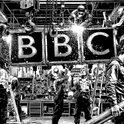It is widely assumed by politicians and pundits alike that local elections are less about rubbish collection and street lights, than they are about national politics. Local polls offer voters the chance to pass judgment on national governments, and it is often a negative appraisal—hence the lament of “mid-term blues” by ministers in television studios on election night. There is indeed a lot to be said for the claim that national politics predominates. In the 1990s, the Conservatives withered away in local government as John Major’s unpopular administration governed in Westminster. The same fate befell Labour under Tony Blair and Gordon Brown a decade later.
That does not necessarily mean, however, that mid-term polls are a good indicator of which party will win the next general election. Local elections allow voters to say whether or not they are satisfied with the government’s performance to date. General elections, in contrast, ask voters which of the potential governments on offer they prefer. That is a very different question. It explains why a governing party may receive a severe kicking from the voters in mid-term locals but ease to victory when the national poll comes round. No matter how unpopular a government appears to be mid-term, its national strength will be threatened only if the major opposition party is a credible government-in-waiting.
On some occasions, that is indeed the case. In the 1976 local elections, which were held just a month after James Callaghan took over from Harold Wilson as Prime Minister, Labour suffered net losses of 1,300 council seats, while the Conservatives made net gains of over 1,700. The Labour government was punished for the turmoil of the economic crisis and industrial militancy that had engulfed it, but an increasingly credible Conservative alternative under Margaret Thatcher’s leadership pointed towards more than just mid-term blues. Another 1,300 net gains for the Conservatives the following year proved it was no fluke, and Labour went down to defeat in the 1979 general election.
“Michael Foot led Labour to net gains of almost 1,000 council seats—but did not look like a prime minister”Similarly, the 1995 local elections were the first to be fought by Labour under Blair. He looked fresh and exciting, whereas John Major’s government was stale and divided. Labour made net gains of 1,800 seats, the Conservatives net losses of over 2,000. It was a harbinger of what was to come in the general election two years later.
Yet even large local-election gains for the opposition need not necessarily be terminal for the government if there are serious question marks over the opposition’s credibility. In 1999, Blair had been Prime Minister for two years and his honeymoon period was wearing off. Labour suffered net losses of 1,100 seats in the local elections, while the Conservatives roared back with net gains of 1,300 seats. But despite these early signs of dissatisfaction with Labour, the Conservatives were seen as divided and their young leader, William Hague, was not regarded as prime-ministerial material. In the general election of 2001, Labour powered to a second successive landslide victory.
A similar predicament had faced Michael Foot, who led Labour to net gains of almost 1,000 council seats at the height of the Thatcher government’s unpopularity in 1981. But Foot did not look like a prime minister either and in 1983 he led Labour to its heaviest general election defeat since 1935. In 1991, Major’s first electoral test as Prime Minister saw the Conservatives suffer net losses of 1,000 seats, with both Labour, under Neil Kinnock, and the Liberal Democrats, under Paddy Ashdown, making significant gains. But the evident preference of many Conservative defectors to vote for the Lib Dems rather than Labour hinted at continuing unease over the prospect of Prime Minister Kinnock. Labour duly lost the general election the following year.
Ed Miliband achieved not one but two impressive performances in local elections, securing net gains for Labour of 800 seats in 2011 and another 800 in 2012. The main losers were the Liberal Democrats, who were punished for joining the coalition and implementing spending cuts. But by the time the 2015 general election had come round, the question was no longer whether voters were satisfied with the coalition’s austerity policies. Instead, it was whether they preferred a Conservative-led government under David Cameron or a Labour-led government under Miliband. Most voters could not see Miliband as prime minister any more than they had Foot, Kinnock or Hague.
“A bad set of results next week could lead to speculation over May’s position”It is generally rarer for governing parties to make impressive gains in local elections, but even when they do, the next general election is not necessarily in the bag. A year ago in 2017, Theresa May, at the height of her powers, led the Conservatives to net gains of 563 seats in the local elections, while Labour under Jeremy Corbyn suffered net losses of 382 seats. It was a desperate position for the opposition to find itself in, as May had already called a general election for the following month. A Conservative landslide looked certain. But the Tories’ impregnable position was blown away in four weeks and May squandered her parliamentary majority.
This year’s local elections are undoubtedly interesting. Most notably they will highlight how London is politically distinct from the rest of England, with large Labour gains expected in the capital. But we will probably not learn much about the likely outcome of the next general election. That will depend on the usual indicators of two-party competition: relative leadership evaluations, economic competency evaluations and policy offerings, as well as the Brexit endgame.
But before dismissing the significance of local elections for the national picture completely, there is a vital caveat. Heavy losses in local elections can deepen any sense of gloom that has taken hold inside a party. That can be dangerous for under-pressure leaders. Theresa May has, against the odds, survived as Prime Minister since the fiasco of the early general election. In no small part she has done so because, despite the government’s appearance of chaos (evident again over Windrush) and division (especially over Brexit), the Conservatives’ poll ratings have held up. A bad set of results next week could change the mood music and lead to more speculation over May’s position. It is in these more immediate considerations that the significance of local elections lies.












